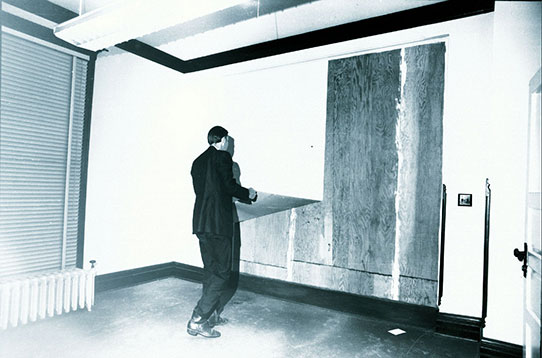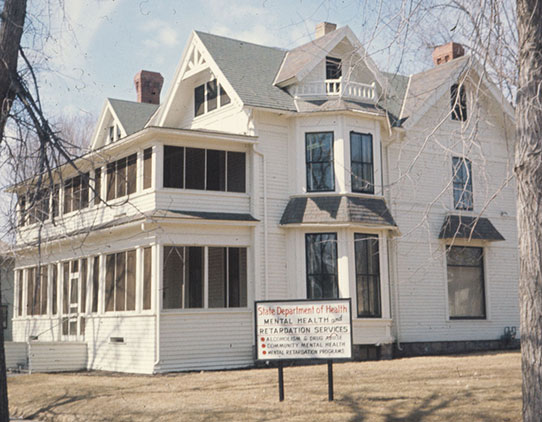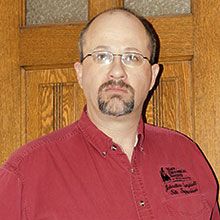When presenting the history of our historic sites, it can be difficult to cover everything that happened over the course of the site. Oftentimes significant events that occurred in the last 50 years or less get reduced to a couple words at the end of an interpretive sign that discusses a longer, older history. The Former Governors’ Mansion State Historic Site was built in 1884 for Bismarck Businessman Asa Fisher, who sold the building to the state in 1893 for use as the executive mansion. The interpretive history displayed at the site focuses on the years from 1893 to 1960, when it was occupied by 20 different governors and their families. If the Former Governors’ Mansion was opening as a historic site today, would the introduction to the history of the building be written differently? What if?
The North Dakota Psychiatric Clinic
In the post-World War II United States, a movement was gaining ground to end the incarceration of the mentally ill in state psychiatric hospitals. In 1946 President Harry Truman passed the National Mental Health Act, which paved the way for states to find ways to help the mentally ill cope, recover, and live positive lives.
The state of North Dakota was a progressive leader in the development of ways to help the mentally ill beyond locking them away for their own safety and that of the community. Legislative action in the 1950s led to the development of outpatient care at the State Hospital in Jamestown and to the opening of the State Psychiatric Clinic in Bismarck in 1960.
The clinic opened in the recently vacated Executive Mansion at 320 East Ave. B. Located in the heart of the residential section of Bismarck, the residence was an ideal, friendly, home-like environment to help those in need.
In 1963 the clinic was part of a national pilot program to develop standards of care and treatment for mental illnesses under President John Kennedy’s Community Mental Health Act., which officially ended the practice of incarcerating the mentally ill without due cause in the United States.
Oral histories collected from many of the professionals that worked at the clinic through-out the ‘60s show that the care provided at the clinic was one of a nurturing, respectable nature every bit as modern in its approach as today’s widely available talk therapy. While it varied over the course of the decade, the clinic generally had two psychiatrists, a psychologist, a couple of social workers, and support staff.

SHSND Superintendent James Sperry exposing the plywood separating the psychiatrist offices. (SHSND0071-009)
Those who utilized the clinic were not limited to what we would consider classic mental illness (e.g., schizophrenia), but what we would consider by modern standards to be general mental health. Common clientele would have included couples seeking marriage counseling, addiction counseling, children with behavioral issues, speech therapy, and developmental disabilities, etc. While many of the people at the clinic were voluntarily seeking help, many of them were court ordered to receive treatment. Prison inmates and children involved in delinquency cases were commonly evaluated for signs of mental illness and provided with treatment options.
In 1966 the clinic became one of eight state-run mental health clinics in North Dakota. To this day those eight clinics continue to serve the people of North Dakota’s mental health needs. In 1972 the clinic moved to the Liberty Memorial Building in downtown Bismarck. The Former Governors’ Mansion was then occupied by the Department of Health Administration offices until 1975, when the building was turned over to the State Historical Society of North Dakota as a state historic site, which now highlights the years it served as the Governors’ Mansion.

State Health Department Administration Office Building, circa 1975. (BPL41_12072007)
When visiting the Former Governors’ Mansion State Historic Site, or any historic site for that matter, keep in mind the history you see presented may be incomplete.The name of the site may only be an introduction to part of a longer history.
Guest Blogger: Johnathan Campbell
 Johnathan Campbell has been around the SHSND for around a quarter of a century. He has been the site supervisor for both the Former Governors’ Mansion, and Camp Hancock State Historic Sites for over a decade, and previous to that was the fossil preparator for the North Dakota State Fossil collection.
Johnathan Campbell has been around the SHSND for around a quarter of a century. He has been the site supervisor for both the Former Governors’ Mansion, and Camp Hancock State Historic Sites for over a decade, and previous to that was the fossil preparator for the North Dakota State Fossil collection.

